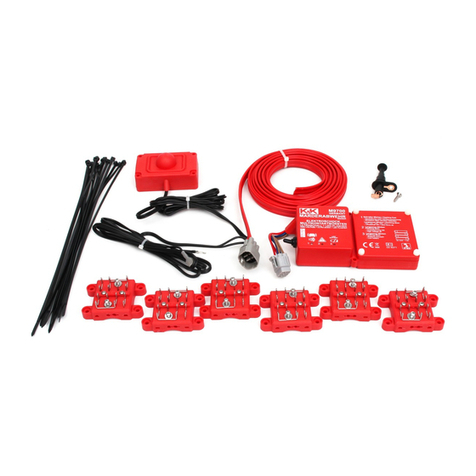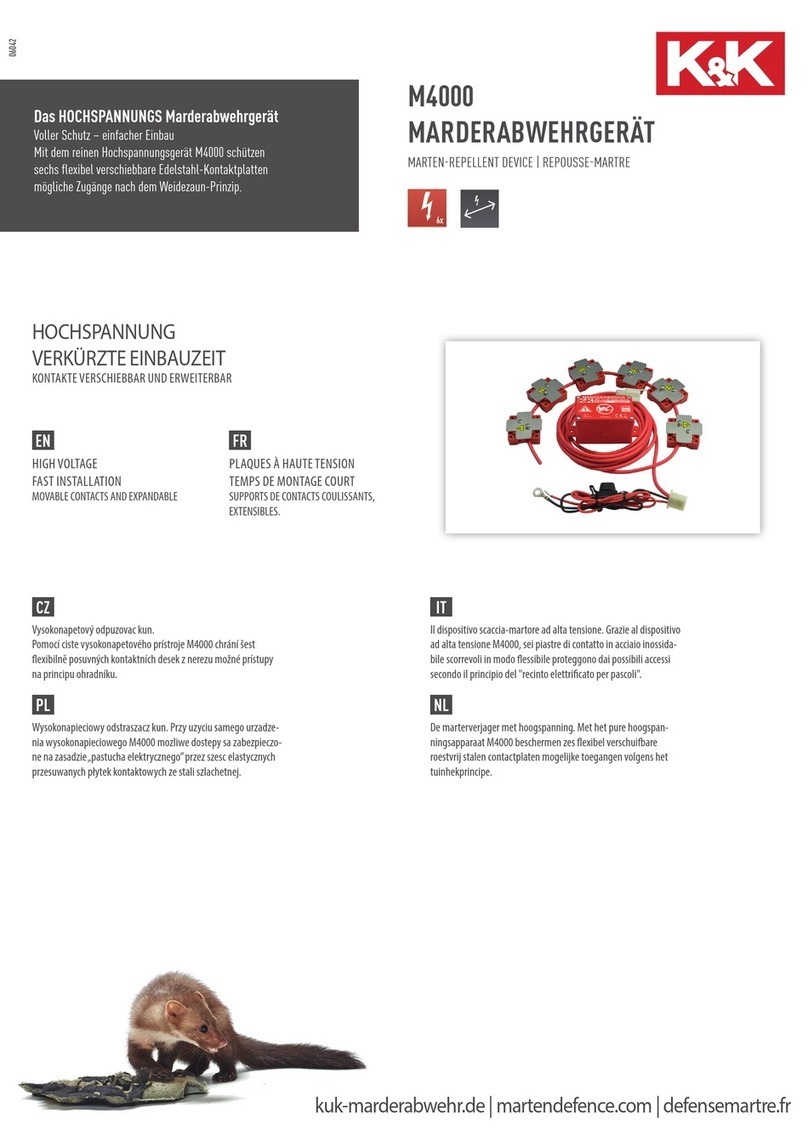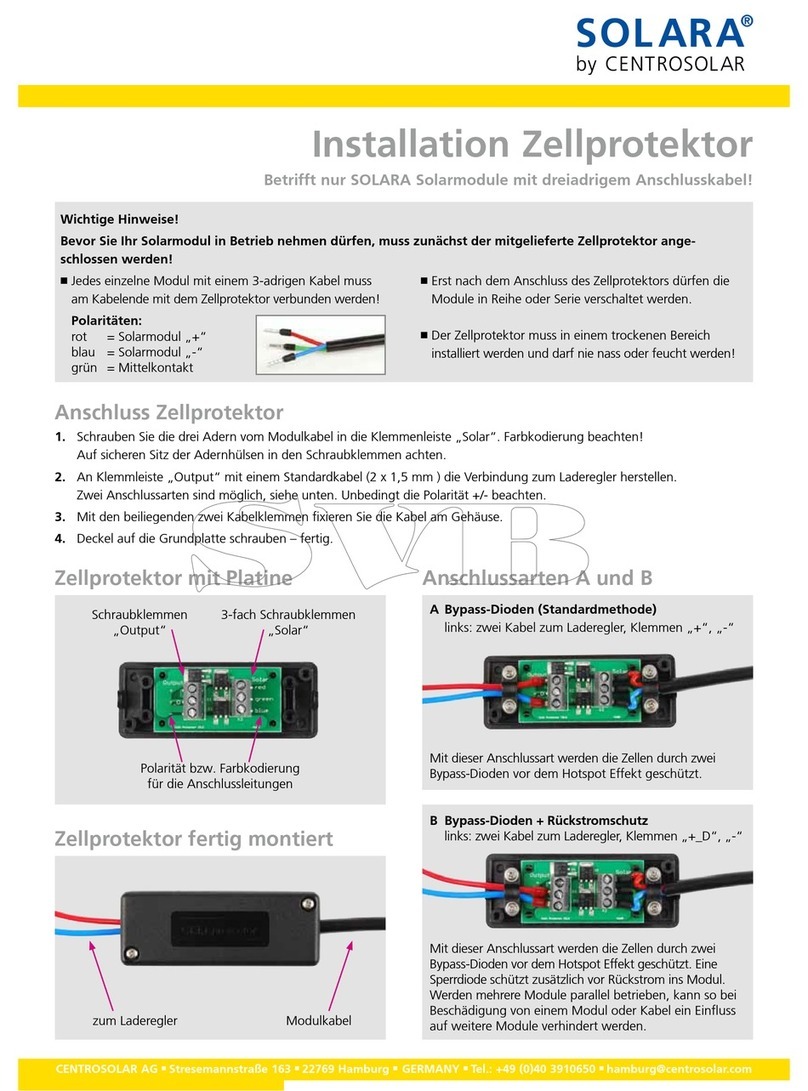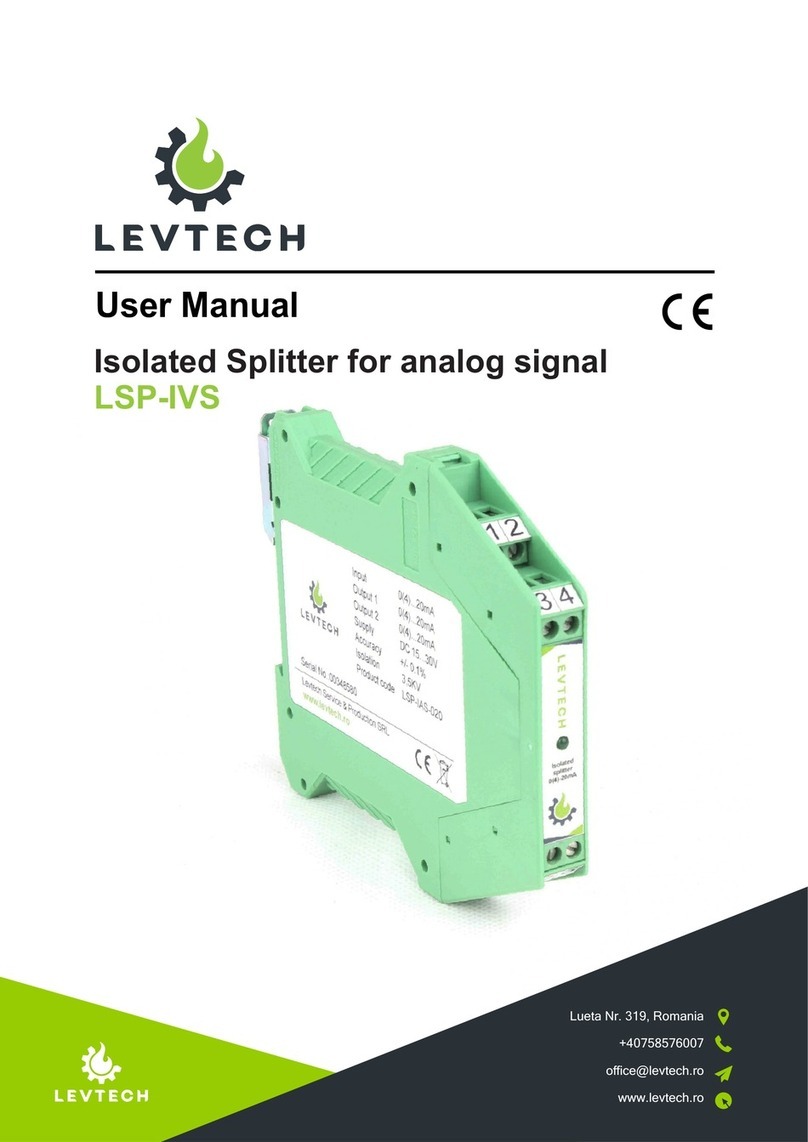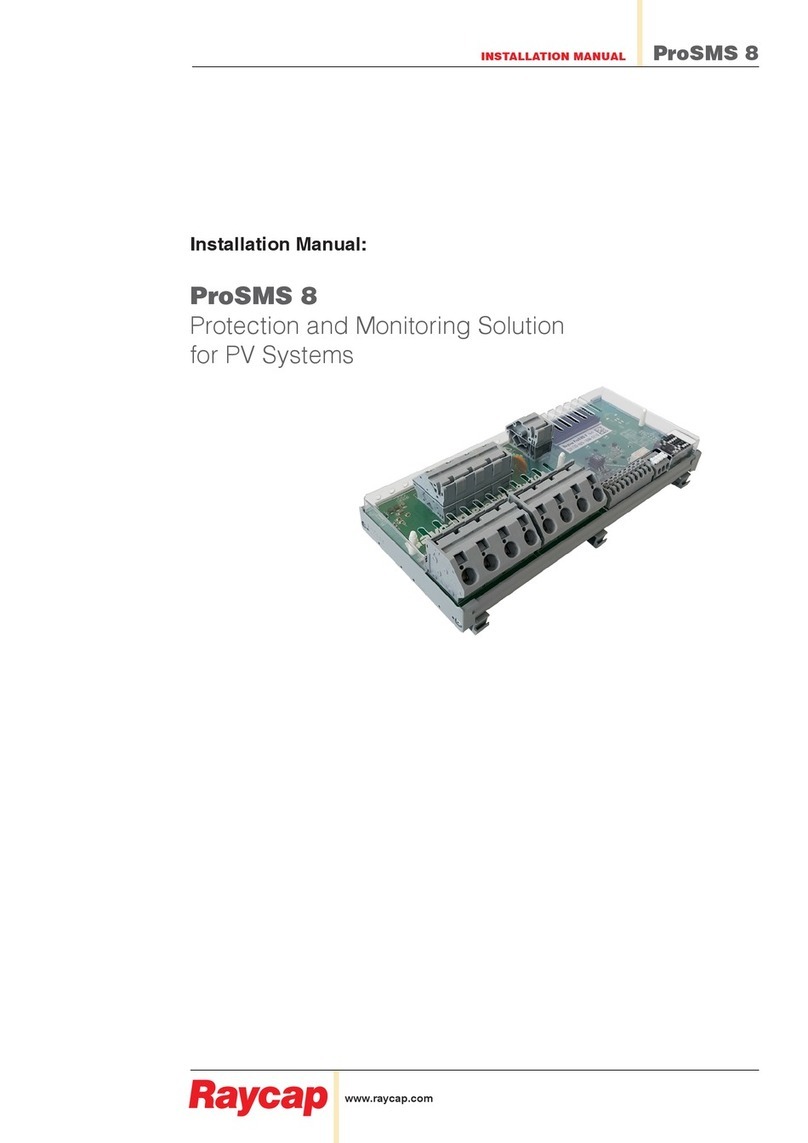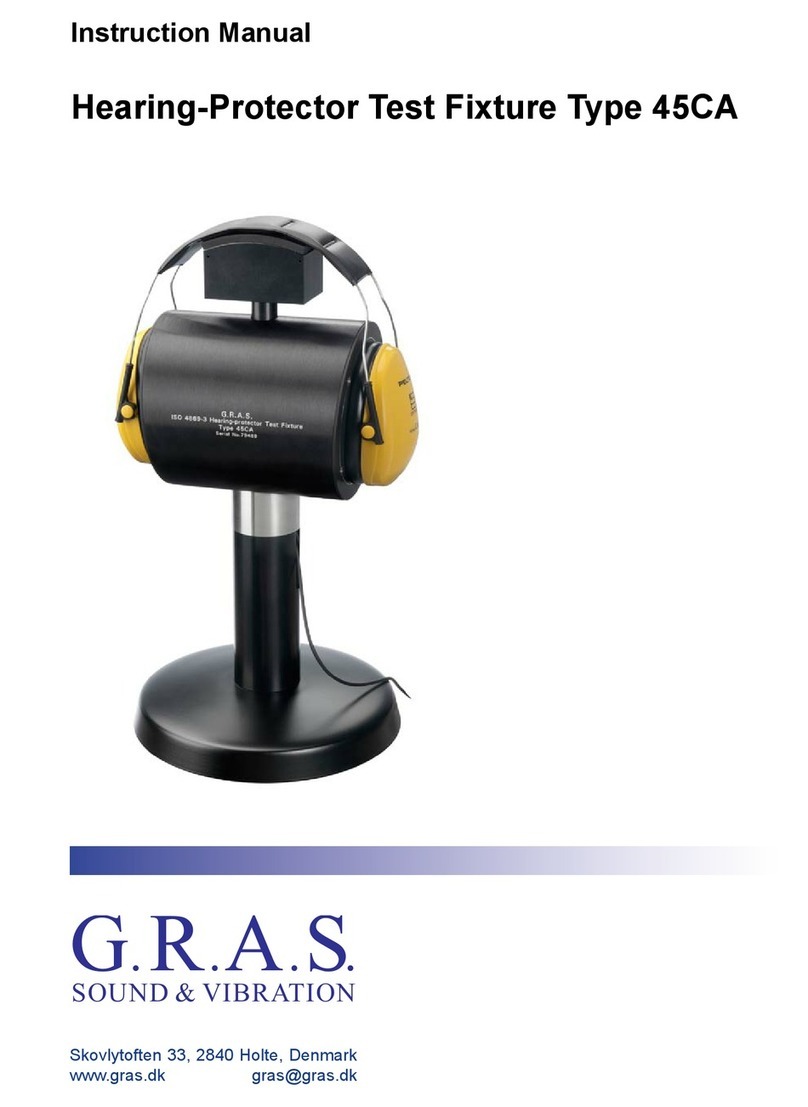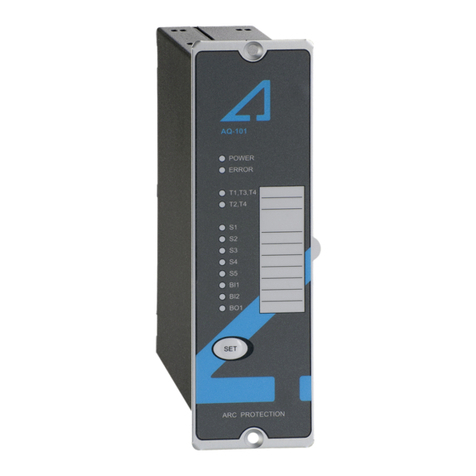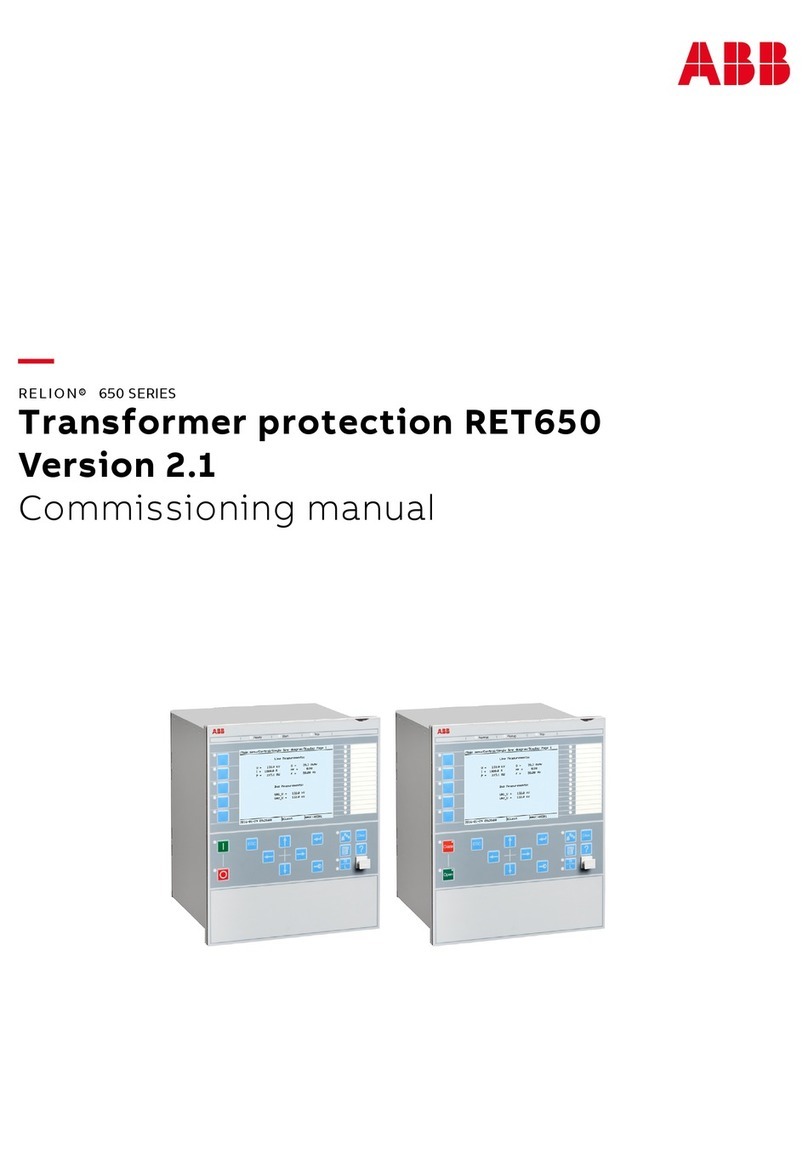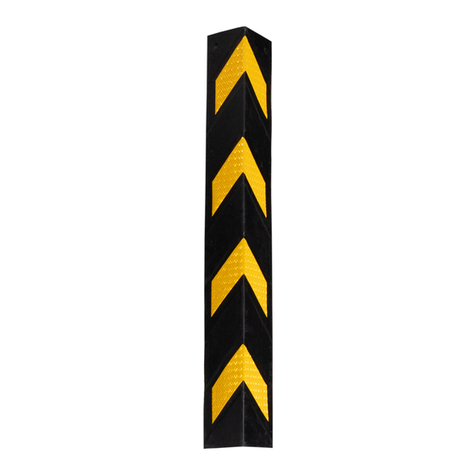K&K M4700B User manual

M4700B Marten scarer for 12 V =
vehicles with multi-contact high-voltage brushes
The M4700B marten scarer works in three ways: ultrasound, electric shocks via new multi-contact
brushes and pulsating light
The M4700 emits electric shocks via multi-contact fur brushes to the marten in the engine
compartment. Positive and negative brush legs are applied simultaneously, which sweep through
the marten‘s fur and emit strong electric shocks directly onto the marten‘s skin. In case of customary
plates it is necessary that the marten touches these with the snout or paws. The fur, however,
insulated and protected the animal. The brushes penetrate the fur now and enlarge the “surface of
attack” by a multiple. The high-voltage stainless steel brushes may be mounted in any place in the
engine compartment so that a flexible shielding, which is adjusted to the respective vehicle is
achieved.
In addition, the control device emits very strong, aggressively pulsating ultrasonic sound in a 360°
radius. This sound randomly varies in frequency and rhythm (so the marten cannot become
accustomed to it).
Due to the water tightness and the completely closed loudspeakers, the device may also be
mounted at deep positions and withstands motor washes, too.
The innovative voltage circuit automatically operates the device as soon as the engine is switched
off. The elaborate connection at terminal 15 is now no longer required. There is the simplest 2-pole
connection, which saves significant installation time.

Extremely low power consumption (< 0.007 A)
Switches off automatically when the battery voltage < approx. 11.1 V ± 0.3 V (battery monitor).
Also suitable for cars with a CAN bus. Also suitable for hybrid vehicles.
Soft start –without influencing on-board electronics
An intelligent soft start circuit activates our modules slowly at a very low power consumption level. Even the
latest highly sensitive on-board computers do not record our modules as consumers in this context. In
contrast to devices with a “hard” start-up and current pulses of up to 25 mA, our modules do not generate
error messages. Battery management systems (BMS) or hybrid vehicles also pose no difficulty for us.
Technical data:
Operating voltage: 12 V car battery
Average power consumption: < 7 mA (± 20%),
Fitted reverse polarity protection, battery monitor: switches off automatically when battery voltage < 11.1 V
(± 3%). Very simple connection, connection to vehicle terminal 15 no longer required
Ultrasonic frequency: approx. 22.5 kHz ± 10% varies randomly in frequency + rhythm
Sound pressure: approx. 115 dB ± 25%
Loudspeaker: Fully-encapsulated loudspeaker dome with circular 360˚ sound radiation
Output voltage: approx. 250....300 V=
Temperature range: approx. -25...+80 degrees C
Function display: 2 flashing LEDs for ultrasound and high voltage (for scaring and function control)
Dimensions of control device: approx. 86 x 55 x 50 mm, cable length of high voltage cable: approx. 4 m (±
10%)
Fuse in fuse holder: Mini 1 A (or 2 A) blade-type fuse
Multi-contact high-voltage brushes with positive + negative legs: 6 pieces movable high-voltage brushes.
Also suitable for vehicles with CAN bus.
Automatic reduction of power consumption in the case of short-circuit or contamination (reactive currents)
at the high-voltage brushes.
Impulse withstand voltage: approx. 40 V 2 mSec
Compact plug-and-socket connection at control device for simple disconnection of the control device from
the cable installation.
Licensed with the e1 symbol by the German Federal Motor Transport Authority.
Available accessories (not included):
Extension kit, article M4700B-kit –4 additional contact brushes for large engine compartments.
Proper use:
To scare martens and other wildlife from the engine compartments of vehicles using electric shocks,
pulsating light and aggressive, pulsating ultrasonic frequencies.
Disposal:
If the devices have to be disposed of, then they should not be placed with domestic refuse. They must be
delivered to collection points for televisions, computers, etc. (please ask your local authority or town council
for the location of these electronic disposal points). Disposal in accordance with the national regulations.
Ultrasonic sound extends like light; there are “shadows” cast behind obstacles (no ultrasonic sound). The
loudspeaker in the device should therefore radiate towards the areas at risk of being bitten. The ultrasonic
sound reaches all points that are visible from the loudspeaker dome in the engine compartment.
Fitting instructions:
During assembly, please take the fuse of the device from the fuse holder. The base device is installed at a
point in the car where it is not too hot (please don‘t install it directly adjacent to the exhaust manifold or
other hot area). The positive cable with the fitted fuse holder is connected to “+12 V”.
The earth cable is connected to the vehicle earth or “-12 V”.
The engine bonnet switch or “short-circuiting switch” immediately discharges the high-voltage brushes
when the engine bonnet is opened (for maintenance work). This can be connected to any brush contact
plate but always on the positive pole of the high-voltage cable (flat lateral contact stud). However, you can
also take the mini blade-type fuse out of the fuse holder by hand and then wait approx. 1 minute until the
high voltage has dissipated in order to then carry out maintenance work with the marten scarer switched off.
Or you can disconnect the compact plug connection. The marten scarer is then immediately switched off

and the high-voltage pads are voltage free. For this reason, please fit the device so that the plug connection
and fuse holder can be reached easily.
The high-voltage cable is laid in the engine compartment so that the contact brushes can be fitted at the
points of risk of being bitten. The high-voltage cable should not be run directly past very hot engine parts
(e.g. exhaust manifold) (the cable insulation may melt). The high-voltage brushes can be fitted at any point
on the high voltage cable, as shown in the drawing.
The contact brushes are fixed in the engine compartment of the car using the 4 drilled holes in the plastic
lower section (using screws or cable ties).
By turning the screw, the high-voltage cable is “tapped” and the contact is created. The plastic holders can
be moved on the high-voltage cable and can be fixed at any point.
Please install the last contact brush at the end of the high-voltage cable so that the cable end does not
show at the side (risk of short circuit).
Important: The high-voltage contact brushes must be fitted so that the bare contact brushes are > 10 mm
from other live contacts in the car. Furthermore, the bare contact surfaces of the contact brushes must not
touch other car parts (risk of short circuit). Reason: Because shielding, plastics (e.g. hoses), which are
frequently used in cars are made of an electrically conductive plastic. These plastics would then short circuit
the high voltage of the contact brushes to earth.
In order to avoid “water bridges” between the contact strands, mount the brushes diagonally so that
possible splash water may flow off well.
Please stick the enclosed yellow “Caution High Voltage” warning sticker on an easily visible point close to
the high-voltage brushes (e.g. on the air filter).
Commissioning:
Refit the fuse that was taken out of the fuse holder before installation. When everything is correctly
connected and the vehicle is parked, the high voltage builds up in the contact brushes, the ultrasonic sound
starts and two small LEDs on the module start to flash (around every 3 –12 seconds, independent of each
other). On initial commissioning, it may take up to five minutes for the LEDs to flash after being switched on.
Troubleshooting:
1) Check: Is the operating voltage 12 V (direct current, car battery) between the +12 V and earth (-12 V)
connections? (The voltage must be between 11 –13.4 V; other voltages will cause the marten scarer to
switch off).
2) Is the engine switched off and no other charger connected to the car battery? The marten scarer will only
switch itself on if the battery is not being charged (engine stopped!).
3) The contact brushes must be freely fitted and must not have any connection to other vehicle parts (risk of
short circuit).
4) Are all the contacts on the plug connection to the base device straight? Or has a pin been bent to the
side by being plugged in crookedly? Is the plug connector connected the right way round? (There is a latch
on the side of the plug connector).
5) Is the fuse in the fuse holder and intact?
6) Please be aware that all of the switching-on and switching-off functions have a few seconds delay!
7) If you have opened the engine bonnet, press the engine bonnet switch down by hand for several
minutes, because it causes the high voltage to short-circuit when the bonnet is open, and the high-voltage
control light on the marten scarer will not flash. When the switch is pressed down, the control LED should
flash. Please do not touch the high-voltage brushes in this state! The bonnet switch functions properly when
the high-voltage LED no longer flashes upon releasing the switch.

Hazard warning for maintenance work:
When opening the engine bonnet, the high-voltage brushes will be discharged immediately through the
connected engine bonnet switch.
The high voltage is not hazardous for people (there is a very small flow of current). However, if you are very
easily startled or will suffer health risks from shocks, then the shock that you receive may constitute a risk.
As far as the multi-contact brushes are concerned, you will get an electric shock when touching several
contact tips at the same time. So, it is not sufficient to touch one single tip only. Positive and negative tips
have to be touched at the same time (as far as the marten is concerned, this happens automatically if it
sweeps by with its fur and the tips of the contact brush touch the skin, snout, etc.).
To be observed in case of external start, rapid charging and welding:
For protection against excessive voltage peaks, please remove the fuse of the marten defence.
General information:
Before fitting the marten scarer, please thoroughly clean the engine compartment of your vehicle (steam
clean the engine or use K&K scent-mark remover, article 000300) and also the surface where your vehicle
regularly stands (e.g. carport). Martens identify their territory using scent marks and can become very
aggressive when they smell the scent marks of another marten in their territory. Our marten scarers with
high-voltage contact brushes are extremely effective in deterring martens. Nevertheless, we cannot
guarantee that the marten will be truly scared off in 100% of all cases!
This marten scarer can only be used in vehicles with a 12 V battery. It may not be operated using electronic
voltage reducers from 24 V lorry batteries, because the marten scarer then cannot identify when the vehicle
is parked (in order to switch on automatically).
Be aware of the following BEFORE FITTING:
All our devices are carefully checked during and at the end of production. Please repeat these checks
before fitting with the engine switched off: Connect the earth cable to the negative pole of the car battery
and the positive cable with the fitted fuse to the positive pole of the car battery. The high-voltage brushes
should lie on an insulating substrate (cardboard, wood). After no longer than 5 minutes, the LED fitted in the
module should flash briefly at intervals of 1 - 12 seconds. This means that the marten scarer is in order and
can be fitted. Caution! After switching off, the high-voltage brushes may remain charged for up to one
minute. Before fitting, please first discharge them (see “Maintenance Work” in the operating instructions).
When checking, please make sure that you do not touch the high-voltage brushes! If the device does not
function in spite of a positive test before fitting, then this is clearly due to a fitting error (see fitting
instructions). We provide a statutory guarantee for the device; we will not pay for costs associated with
fitting and dismantling.
Other manuals for M4700B
1
Table of contents
Other K&K Protection Device manuals
